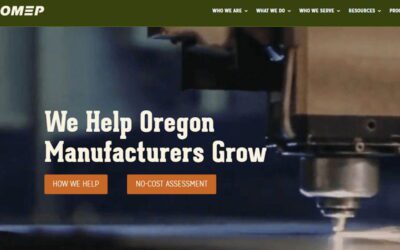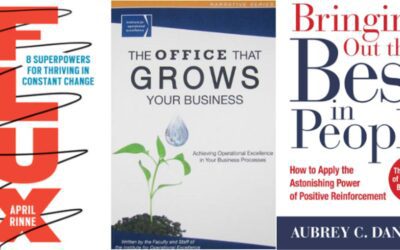One of biggest areas of opportunity and uncertainty coming out of tax reform, commonly referred to as the Tax Cuts and Jobs Act (TCJA), is the Qualified Business Income (QBI) deduction under Section 199A. The new deduction could reduce an individual’s tax liability for businesses operated through partnerships, S corporations, and sole proprietorships—allowing a deduction equal to 20% of their QBI. Where applicable, the QBI deduction significantly decreases a taxpayer’s effective tax rate.
On August 8, 2018, the Treasury and the IRS issued proposed regulations providing guidance on several key issues including:
- Defining a trade or business
- Aggregating trades or businesses
- Computing W-2 wage and property limitations
- Defining specified service trades or businesses
Here are the main points to know.
Trade or Business
The new proposed regulations utilize the long-standing judicially and administratively developed definition of a trade or business under Section 162(a), which is expanded to include the rental and licensing of tangible or intangible property if the property is rented to a trade or business that’s commonly controlled.
For the purposes of Section 199A, common control is defined to be in the case of S corporations’ ownership of 50% or more of the outstanding shares, or in the case of partnerships, ownership of 50% or more of the profit or capital. This rule allows taxpayers to aggregate their trades or businesses with the integrated rental or intangible property if all the requisite aggregation rules discussed below are met.
Aggregation
Prior to the new proposed rules, there was concern among taxpayers and preparers as to how the IRS would treat a related business or businesses spread over multiple entities. In response, the proposed rules provide for aggregation of trades or businesses in determining an individual’s QBI, W-2 wages, and qualified property calculations. These rules are intended to provide a reasonable approach in aggregating businesses for the pass-through deduction where the businesses are related in ownership and have similar characteristics. While aggregation is generally allowed, it isn’t mandatory.
To qualify for aggregation, a person or group must commonly control more than 50% of the stock of the S corporation, profit, or capital of a partnership for the majority of the taxable year. The aggregated amounts must be reported on returns with the same tax year and no aggregated business can be a specified service trade or business.
In addition, the aggregated businesses must meet two of the following three tests:
- The trades or businesses provide products and services that are the same or customarily offered together.
- The trades or businesses share facilities or significant business elements.
- The trades or businesses are operated in coordination with or reliance upon one or more of the businesses in the aggregated group.
These businesses will need to be aggregated on the individual’s tax returns for each year and elected. The individual will need to attach statements describing the aggregated businesses on their returns. Failure to do so could result in the IRS disaggregating the businesses. Once businesses are aggregated they must remain aggregated unless there’s a change in facts and circumstances that results in the historic aggregation failing to meet the specified requirements for aggregation.
W-2 Wages and Property Limitations
The 20% pass-through deduction is generally limited to whichever is greater: 50% of W-2 wages or 25% of W-2 wages plus 2.5% of the unadjusted basis in qualified property. The proposed regulations provide welcomed guidance on defining W-2 wages and property for purposes of computing any limitations.
W-2 Wages
Prior to the new guidance, taxpayers were uncertain whether W-2 wages from third-party service providers would be considered W-2 wages for the pass-through deduction. The new guidance follows the old domestic production activities deduction (DPAD) guidance under Section 199 and permits taxpayers to include wages from workers who receive W-2 wages from third-party payers, including professional employer organizations, in W-2 wages for purposes of the pass-through deduction.
The additional issued guidance includes rules for computing W-2 wages, and again, these rules mirror the now repealed DPAD guidance. While these rules are new, taxpayers and their advisors have a significant head start since these rules are similar to prior guidance related to the determination of W-2 wages.
Property
For purposes of wage and property limitations on the pass-through deduction, property generally means tangible property used in a trade or business that’s subject to the allowance for depreciation and is held by the taxpayer at the end of the year.
The depreciable period is whichever is longer: 10 years from the date placed in service or the last full day of the year in the recovery period that applies to the property under Section 168(c). The limitation is computed on the unadjusted purchase price of the property, which generally means for the purposes of the 2.5% limitation the property basis isn’t reduced by depreciation.
The proposed rules clarify that the additional first-year depreciation allowance won’t affect the applicable recovery period. Therefore, a taxpayer may claim bonus depreciation on the property, and the property remains qualified property for purposes of the 2.5% property limitation. The rules further clarify that any step-up adjustments related to sales of partnership interest aren’t treated as separate qualified property.
For like-kind exchanges, the new rules determine the depreciable period of property received by reference to the property relinquished. The new rules do contain anti-abuse measures to prevent taxpayers from stuffing property into a trade or business toward the end of a tax year. Any property acquired within 60 days of the tax year-end and disposed of within 120 days must be used in the trade or business for at least 45 days.
In addition, special rules apply to property contributed to an S corporation or partnership limiting the basis in these types of transactions to the adjusted basis at the time of contribution for the purposes of determining the amount of the 20% deduction. For nonrecognition transactions, the place in service date of determining the depreciable period of the property is the date the transferor originally placed the property in service.
Specified Service Trades or Businesses (SSTBs)
Generally, a specified service trade or business (SSTB) can’t be treated as a qualified trade or business for purposes of the QBI deduction, unless the taxable income is below the threshold. The QBI deduction for an SSTB starts to phase out after an individual’s taxable income exceeds $315,000 for married filing joint filers and $157,500 for all other filers. An SSTB is defined as any trade or business performing services in the fields of:
- Health
- Law
- Accounting
- Actuarial science
- Performing arts
- Consulting
- Athletics
- Financial services
- Brokerage services
It also includes any trade or business that performs services consisting of the following:
- Investment and investment management
- Trading or dealing in securities
- Trading of partnership interests
- Trading of commodities
An SSTB also includes any trade or business where the principal asset is the reputation or skill of one or more of its owners or employees, though the new rules limit this provision to situations in which the person receives fees, compensation or other income for any of the following:
- Endorsing products or services
- Using an individual’s image, likeness, name, signature, voice, trademark, or any other symbols associated with the individual’s identity
- Appearing at an event or on, television, or another media format
Exception for Limited SSTB Gross Receipts
The proposed rules do provide some relief to taxpayers earning small amounts of service income. A trade or business will not be considered an SSTB if the business has gross receipts of $25 million or less and less than 10% of the gross receipts of the business is attributable to the performance of services listed in the definition of an SSTB. In addition, for trades or businesses with gross receipts greater than $25 million, such trade or business isn’t considered an SSTB if less than 5% of the gross receipts are attributable to the performance of services included in the definition of an SSTB.
The new rules also address certain tax-planning strategies that practitioners have been contemplating to work around SSTB limitations. The rule is designed to prevent so-called crack and pack scenarios in which, for example, accounting or law firms would divide their operations and related business property or services into different functional entities to make the qualifying portion eligible for the QBI deduction.
The proposed regulations contain a provision that a trade or business will be classified as an SSTB if it provides 80% or more of its property or services to an SSTB and the two businesses share 50% or more common ownership. Even if the trade or business provides less than 80% of its property or services to a commonly controlled SSTB, the portion of the income earned from the rental of property or provision of services to the SSTB is treated as income earned in an SSTB that is ineligible for the QBI deduction.
Other Items
Other highlights in the proposed new rules include the following:
- Rules for the treatment of Section 1231 regarding gains and losses
- Rules related to pre-January 1, 2018 loss carryforwards
- Anti-abuse rules to prevent the use of multiple trusts to take advantage of the QBI deduction in situations where a business may have limited W-2 wages or W-2 wages and property
- Anti-abuse rules related to estate investment trust, known as REIT, dividend stripping
We’re Here to Help
While the proposed regulations provide much-needed guidance for taxpayers and advisors, there remain many areas that will need additional guidance. One area in which the Treasury and IRS plan to issue separate regulations is for agricultural and horticultural cooperatives and their patrons.
If you have any questions, please reach out to your Moss Adams professional.



